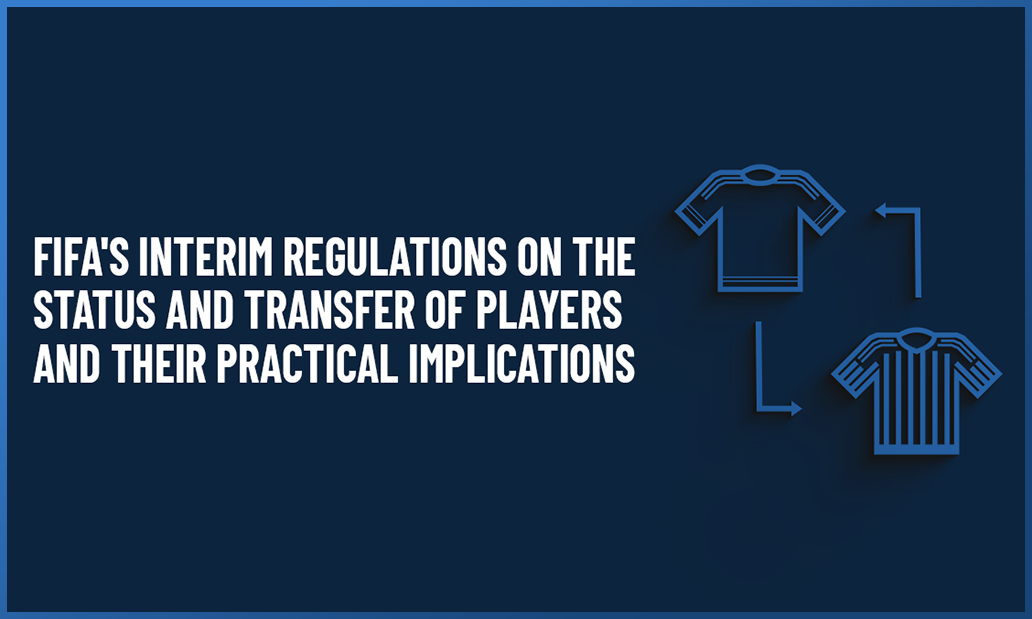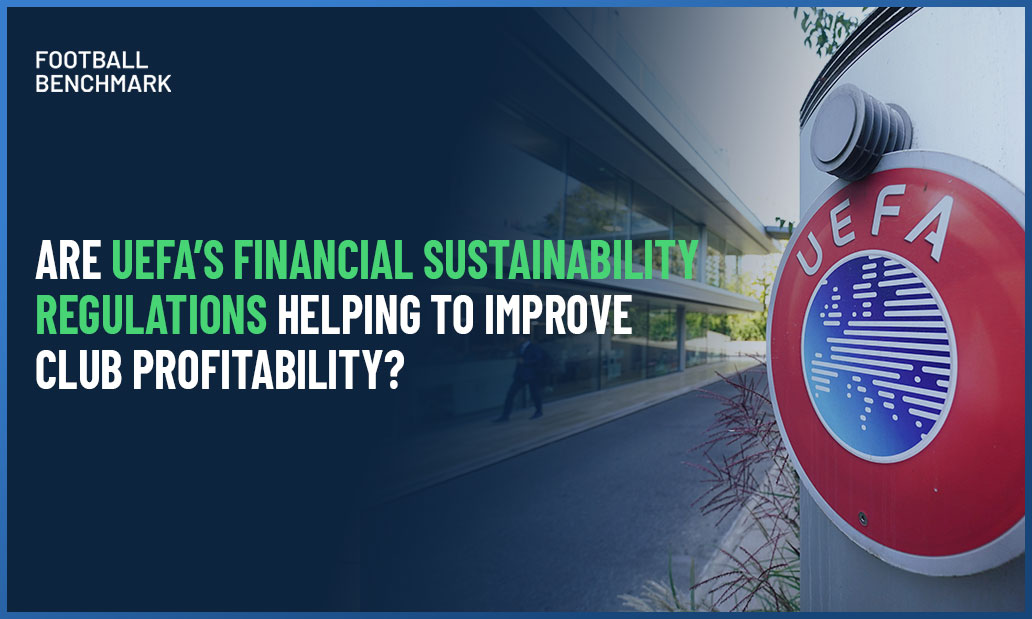
In this week’s edition, Football Benchmark has partnered with the boutique law firm specialised in sports law, Cavaliero & Cambreleng, to provide an in-depth analysis of a major development in football’s regulatory landscape: the evolution of FIFA’s Regulations on the Status and Transfer of Players (RSTP) following a landmark Court of Justice of the European Union (CJEU) ruling in the Lassana Diarra case.
This judgment carries significant implications for player mobility, contractual stability, and the broader regulatory framework governing football transfers. Leveraging their legal expertise, Cavaliero & Cambreleng examine the ramifications of this decision and provide key takeaways for those navigating this evolving legal landscape.
In the coming weeks, we will follow up with an analysis of the potential financial and accounting considerations arising from these regulatory developments, offering further insights into their impact on the football industry.
I. Introduction
For decades, FIFA has played a central role in regulating international football transfers and the rules governing the employment of professional players. In doing so, it has always sought to ensure uniformity and fairness while balancing the interests of various stakeholders. The Regulations on the Status and Transfer of Players (“RSTP”) serve as the foundation for these efforts, outlining the rules governing contracts, transfers, and disputes. Recent developments, however, have necessitated significant updates to the regulatory framework.
Although the initial edition of the RSTP is based on an agreement between FIFA, UEFA and the European Union, the recent ruling rendered on 4 October 2024 by the Court of Justice of the European Union (“CJEU”) in the Lassana Diarra case highlighted conflicts between FIFA’s existing regulations and EU law. The CJEU found that some core provisions of the RSTP were no longer compliant with the free movement of players and with competition law.
To address these issues, FIFA immediately announced the opening of a global dialogue. However, given the impossibility to reach a proper consensus with the stakeholders before the start of the registration periods in 2025 and due to the need for certainty and stability in the sport, FIFA adopted an Interim Regulatory Framework.
These changes to the RSTP were adopted on 22 December 2024 and entered into force on 1 January 2025. They are designed to immediately align FIFA’s rules with the CJEU’s findings while, in parallel, the information received from the global dialogue is being processed to allow the stakeholders and FIFA to reach a decision on the permanent amendments to the RSTP.
II. Brief overview of FIFA's key changes in the Interim Regulatory Framework
Although FIFA stated that the temporary amendments are not a recognition of the illegality of its previous rules, the Interim Regulatory Framework introduce several key amendments to the RSTP, focusing on clarity and procedural fairness:
- Codification of the notion of "just cause." As FIFA explained, this amendment only formalizes the established jurisprudence of the Football Tribunal and the Court of Arbitration for Sport and intends to provide greater clarity and predictability (which, according to the CEJU, was lacking).
- The criteria to calculate compensation for breach of contract have been revamped to provide greater clarity. The reason for this was that the CJEU had found that there was a lack of clarity that made it difficult for clubs and players to predict the amount of compensation due in the event of a breach of contract. As a response, FIFA introduced the term “damages” to its art. 17.1 RSTP and has made an explicit reference to the principle of "positive interest." This principle ensures that compensation is calculated to restore the injured party to the position in which it would have been, if the breach had never occurred. Thus, the party claiming a damage must continue to prove and quantify them and must also demonstrate its efforts to mitigate those damages. Similarly, parties may still contractually agree in advance the amount of compensation that they will owe each other in case of early and unilateral termination of the contract.
- Another critical change involves the burden of proof concerning the joint and several liability of a player’s new club and its inducement to breach a contract. Until December 2024, when a club hired a player that had unilaterally terminated his contract with his/her previous employer without just cause, that new club would be automatically jointly and severally liable (together with the payer). Moreover, if the breach happened during the so-called protected period, the new club would have to demonstrate that it had not induced the player to breach his/her prior contract, otherwise, it would be imposed sporting sanctions. Under the new framework, this burden has been reversed. Now, the player’s previous club claiming damages from the early termination must also prove that the new club induced the player to breach the employment contract to create the joint and several liability of the player’s new club. Similarly, if the club claiming damages seeks sanctions against the new club, it must prove the inducement to breach the contract. This is also a novelty compared to the previous rules, which foresaw in that respect a presumption of inducement and consequently a reversal of the burden of proof.
- Due to the reversal of the burden of proof, the new framework introduces a duty for all parties to a dispute to collaborate when establishing facts and providing evidence. Before these changes, the Football Tribunal would occasionally order the production of certain documents to the parties, and it would generally not act when a party would make such sort of evidentiary requests. Since the players’ previous clubs will now have to prove many key aspects of a dispute (which may not be available to them), the Football Tribunal will start to accept evidentiary requests from parties. A party’s failure to comply with such a request may lead to an adverse inference, ensuring greater accountability and transparency in the dispute resolution process.
- Another procedural update involves the mechanism surrounding the delivery of International Transfer Certificates (“ITCs”). Under the new system, associations cannot refuse to issue an ITC due to pending contractual disputes. This modification is mostly of cosmetic nature, since under the previous rules, an association was not entitled to impede a player’s international transfer by withholding the ITC.
III. Legal Implications of the Changes
The Interim Regulatory Framework is a clear response by FIFA to address legal challenges and align with EU principles of free movement and competition law. By codifying principles and reversing the burden of proof in key areas, FIFA aims to create a more transparent and predictable regulatory environment. The codification of "just cause" provides legal certainty while maintaining a case-specific approach. Players and clubs should now better anticipate how disputes will be resolved, which should foster trust in the FIFA system.
The review of the method to calculate compensation for breach of contract is particularly noteworthy. By removing criteria which were found to be problematic by the CJEU and focusing on the "positive interest" principle that had sometimes been applied by the Football Tribunal and CAS, the framework shall now ensure that damages are calculated in a more predictable and transparent way. This not only aligns with broader principles of contract law but also addresses concerns raised by the CJEU. The requirement for claimants to substantiate and quantify damages encourages evidence-based claims and discourages frivolous disputes.
The reversal of the burden of proof for joint and several liability introduces a significant legal shift that will probably have a direct impact on the behaviour of clubs and players. Clubs requesting compensation must now prove inducement if they want to have two creditors (i.e., the player and his/her new club) instead of only one (i.e. the player). The combination of the shift of the burden proof and the duty to collaborate will require a more thorough and sophisticated legal approach to the disputes handled before the Football Tribunal. This should strengthen the integrity and robustness of the dispute resolution process.
IV. Practical Impact on Stakeholders
The revised regulations have profound implications for players, clubs, and associations.
For players, the codification of "just cause" offers clarity and protection in cases of contract termination. However, the reversal of the burden of proof for joint and several liability introduces potential risks, as players may bear the responsibility to pay compensation on their own if their new clubs are not found to have induced them to terminate their previous employment contracts early. This underscores the importance of careful legal and financial planning when negotiating contracts or pursuing disputes. The changes also enhance the players' mobility, as the updated ITC rules ensure that contractual disputes do not have any impact in career progression.
Clubs face new strategic and operational challenges under the temporary framework. The reversal of the burden of proof for inducement will require the claiming clubs to identify the necessary pieces of evidence that could prove such inducement, if at all existing. On the other hand, the engaging clubs accused of potential inducements, should document meticulously all interactions with the new players so that they can comply with their duty to collaborate with the evidentiary requests that they will have to face. Financially, the emphasis on evidence-based claims and the removal of problematic compensation criteria may create greater predictability, but it also places higher demands on clubs to navigate disputes effectively.
Associations and leagues must align their regulations with FIFA’s updated rules, a process that may involve reviewing existing provisions and educating their own members and stakeholders, while abiding to possible mandatory law at national level. Protecting the integrity of their competitions remains a top priority, as associations and leagues must monitor compliance of the rules to maintain fair play. The updated ITC mechanism will also require associations to streamline their processes, ensuring timely player registrations while addressing any technical challenges that arise.
V. Recommendations for Stakeholders to Navigate the Interim Regulations Effectively
To navigate the Interim Regulatory Framework effectively, stakeholders must adopt a proactive and informed approach. Players and clubs should seek professional advice to understand their rights and obligations under the new rules. For players, this includes ensuring that contract terms are clear and that potential liabilities are understood. Players may also want to seek (contractual) assurances from their new employers that they will contribute to pay compensation to the old club even if the Football Tribunal does not hold them jointly and severally liable. However, this will probably constitute a difficult point to negotiate for many players.
For engaging clubs, due diligence is essential when signing players, particularly those with unresolved contractual disputes. Clubs that claim damages will need to define sound legal strategies before lodging a claim and/or seeking extrajudicial settlements with other clubs.
All parties will need to be more meticulous when interacting with each other and they should focus on documenting their steps to be able to comply with their respective duties in potential disputes.
From a procedural standpoint, parties must respond promptly to evidentiary requests, as failure to do so may result in adverse inferences from the Football Tribunal and CAS panels. For example, if a player moves to a new club after terminating his contract with an alleged just cause, the claiming club will now bear the burden of proving that the new club induced the player to breach the contract. In that situation, the claiming club will have to substantiate its claim with evidence of active interference by the new club, such as communications encouraging the breach, evidence on the behaviour of the player, and potential parallelisms between those sets of facts. To do so, the claiming club will have to identify specific documents likely to exist and to be under the control of the new club and/or the player. Once identified, the new club will have to explain the relevance of those documents so that the Football Tribunal accepts to request them from the new clubs. On the other hand, the new club will then have to be ready to produce said evidence or to explain in a persuasive way that the reason why the information cannot be provided.
VI. Conclusion
The Interim Regulatory Framework represents FIFA’s expedited response to the Diarra decision and reflects an ongoing effort to adapt global football regulations to contemporary legal standards. Pending cases before the Football Tribunal, particularly those involving the amended provisions of Article 17 of the RSTP, will be adjudicated under the new framework. FIFA has emphasized that all affected parties will have the opportunity to present their positions, ensuring fairness in the application of the revised rules. Additionally, certain disciplinary measures, such as sanctions based on joint and several liability, have been temporarily suspended, although they may be reinstated following further review.
Looking forward, FIFA continues to engage in extensive consultations with stakeholders to shape the long-term future of the RSTP. There is no information about the expected duration of this process, and therefore the interim rules might be in place for a while.
This collaborative dialogue shall create a robust global regulatory framework that ensures competitive balance, contractual stability, and the integrity of competitions, while taking into account the legitimate interests of all parties and building a foundation for sustainable governance in international football. As the football world adjusts to the interim measures, the current and upcoming registration periods and Football Tribunal decisions will provide valuable insights into the effectiveness and practicality of these changes.




